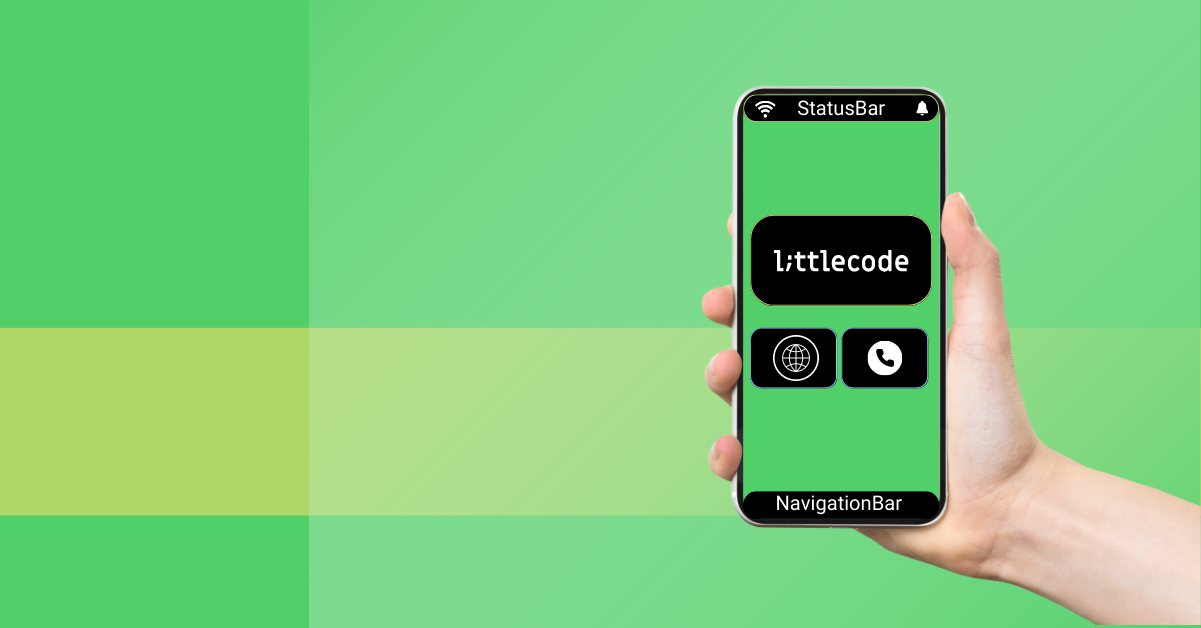Integrate OpenStreetMap using Leaflet with an Angular application

Today many clients for Angular applications require some kind of maps. In this example, I will describe how to implement OpenStreetMap using a Leaflet render.
Requirements
Angular requires a current, active LTS, or maintenance LTS version of Node.js.
Setup Angular PWA application
Install and setup Angular
- Install Angular CLI globally npm install -g @angular/cli
- Generate new Angular app using Angular CLI, called AngularPWA ng new AngularPwa
During development you can run the application with the command ng serve.
By default your application will be hosted on http://localhost:4200.
If you want to build your Angular application, run the command ng build. For a production build add the production parameter ng build –prod. Inside your Angular application folder, a dist folder will be created with the compiled files.
OpenStreetMap and LeafletJS
OpenStreetMap is a free editable map of the world, created by community contributors. Each contributor created some part of map data, such as roads, trails, hospitals, trees… One of the most popular JavaScript libraries for embedding OSM map is Leaflet.
Install Leaflet
To use Leaflet in a Angular project, you need to install depencency packages:
npm i --s leaflet– Leaflet package.npm i --s @asymmetrik/ngx-leaflet– Leaflet wrapper for Angular. Provides flexible and extensible components for integrating Leaflet into a Angular project.
Because we are using TypeScript inside our Angular project, you should install types for Leaflet npm i @types\leaflet.
After the installation process, you must implement Leaflet inside our application:
- Add Leaflet style into the application, inside
angular.jsonaddleaflet.cssfile: - Before you are starting to use Leaflet inside your application, you must import the Leaflet module inside
app.module.tsor inside the module you want to use it:
Add and configure the map in the application
After the installation of the depencency packages, you should add a map inside your component. Inside a template of your component (for demo purposes I will use app.commponent) you must add the leaflet attribute directive:
<div class="map"
leaflet
[leafletOptions]="options">
</div>If you want a fullscreen map, you shoud add some style for the map (in this case inside app.component.scss):
.map {
height: 100%;
padding: 0;
}Inside your app.component.ts add options for leaflet:
import { Component } from '@angular/core';
import * as Leaflet from 'leaflet';
@Component({
selector: 'app-root',
templateUrl: './app.component.html',
styleUrls: ['./app.component.scss']
})
export class AppComponent {
title = 'AngularOSM';
options: Leaflet.MapOptions = {
layers: getLayers(),
zoom: 12,
center: new Leaflet.LatLng(43.530147, 16.488932)
};
}
export const getLayers = (): Leaflet.Layer[] => {
return [
new Leaflet.TileLayer('https://{s}.tile.openstreetmap.org/{z}/{x}/{y}.png', {
attribution: '© OpenStreetMap contributors'
} as Leaflet.TileLayerOptions),
] as Leaflet.Layer[];
};The Leaflet render includes multiple options, such as:
- Layers – you can render multiple layers from multiple sources. For this sample we are using the OpenStreetMap tile service with their attribution.
- Zoom – most tile services offer tiles up to zoom level 18 depending on their coverage.
- Center – specify the geographic center of the map.
When you start your application with ng serve command and open http://localhost:4200, you should see a map rendered.
Show markers on the map
For example, let’s add two markers on the map. One marker will represent “Workspace” and the second one is “Riva”.
export const getMarkers = (): Leaflet.Marker[] => {
return [
new Leaflet.Marker(new Leaflet.LatLng(43.5121264, 16.4700729), {
icon: new Leaflet.Icon({
iconSize: [50, 41],
iconAnchor: [13, 41],
iconUrl: 'assets/blue-marker.svg',
}),
title: 'Workspace'
} as Leaflet.MarkerOptions),
new Leaflet.Marker(new Leaflet.LatLng(43.5074826, 16.4390046), {
icon: new Leaflet.Icon({
iconSize: [50, 41],
iconAnchor: [13, 41],
iconUrl: 'assets/red-marker.svg',
}),
title: 'Riva'
} as Leaflet.MarkerOptions),
] as Leaflet.Marker[];
};** Inside the assets folder you must add icons for markers, which will be rendered on the map.
Now, inside our layers we must add created markers. After that, check the application and the map with two markers that should be rendered.
export const getLayers = (): Leaflet.Layer[] => {
return [
...
...getMarkers()
] as Leaflet.Layer[];
};Show polylines on the map
We already created markers on the map, now we want to show the polyline between those two markers:
export const getRoutes = (): Leaflet.Polyline[] => {
return [
new Leaflet.Polyline([
new Leaflet.LatLng(43.5121264, 16.4700729),
new Leaflet.LatLng(43.5074826, 16.4390046),
] as Leaflet.LatLng[], {
color: '#0d9148'
} as Leaflet.PolylineOptions)
] as Leaflet.Polyline[];
};Of cource, we must include it inside our layers:
export const getLayers = (): Leaflet.Layer[] => {
return [
...
...getRoutes()
] as Leaflet.Layer[];
};Show polygons on the map
Let’s try to add some polygone on our current map. Polygone is a two-dimensional plane shape with three or more straight sides. Defining a polygone is done with defining multiple points.
export const getPolygons = (): Leaflet.Polygon[] => {
return [
new Leaflet.Polygon([
new Leaflet.LatLng(43.5181349, 16.4537963),
new Leaflet.LatLng(43.517890, 16.439939),
new Leaflet.LatLng(43.515599, 16.446556),
new Leaflet.LatLng(43.518025, 16.463492)
] as Leaflet.LatLng[],
{
fillColor: '#eb530d',
color: '#eb780d'
} as Leaflet.PolylineOptions)
] as Leaflet.Polygon[];
};
After defining a polygone we should add it inside our layers:
export const getLayers = (): Leaflet.Layer[] => {
return [
...
...getPolygons()
] as Leaflet.Layer[];
};Edit map style
If you want to edit the style of your map, you can use MapTiler. After you create your own or choose one of the sample designs, you can just change URI of our TileLayer. For example, I will use the pastel style for map:
export const getLayers = (): Leaflet.Layer[] => {
return [
// Basic style
new Leaflet.TileLayer('https://{s}.tile.openstreetmap.org/{z}/{x}/{y}.png', {
attribution: '© OpenStreetMap contributors'
} as Leaflet.TileLayerOptions),
// Pastel style, remove if you want basic style.
new Leaflet.TileLayer('https://api.maptiler.com/maps/pastel/{z}/{x}/{y}.png?key={your_key}', {
attribution: '<a href="https://www.maptiler.com/copyright/" target="_blank">© MapTiler</a> <a href="https://www.openstreetmap.org/copyright" target="_blank">© OpenStreetMap contributors</a>',
} as Leaflet.TileLayerOptions),
...getMarkers(),
...getRoutes(),
...getPolygones()
] as Leaflet.Layer[];
};In this case, we have two layers of maps. The first one is with a basic style and the second one is pastel styled. The pastel styled map will be rendered above the basic one. The idea is that you can have multiple layers. So each layer will represent some data.
** Be careful. MapTiler is only free for non-comercial use and limited on 100 thousand/month. Check the pricing plan.


